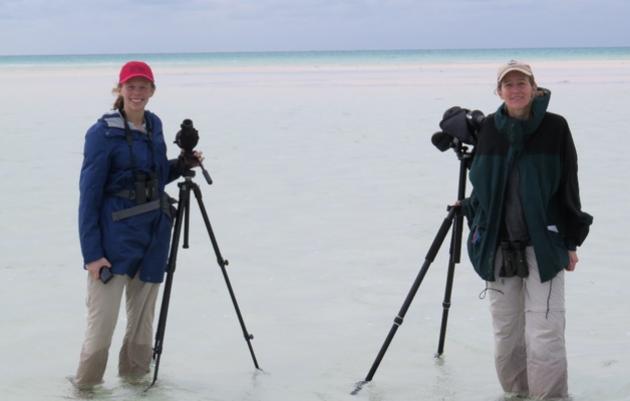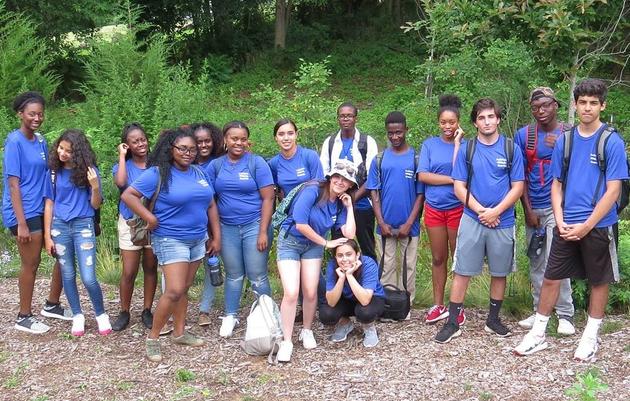Monday, February 25, 2019— Piping Plover "Pink Flag 2E" first captured our attention in the summer of 2017, when she successfully raised three chicks on a Connecticut beach with quite a bit of foot traffic!
This month, Pink Flag 2E was spotted by a National Audubon Society research team in the Bahamas, thanks to the pink identification band around its leg (the official color of the Bahamas and Caribbean)!
“This is truly a conservation success story,” stated Corrie Folsom-O’Keefe, director of conservation for Audubon Connecticut. “The global population of Piping Plovers - which only numbers around 8,000 individuals -- is listed as federally and state-threatened. With just over 60 pairs nesting on our Connecticut beaches each year, our conservation efforts are absolutely essential for each and every breeding pair and their chicks."
Thanks to close monitoring and stewardship by an Audubon Alliance for Coastal Waterbirds technician this past summer, Pink Flag 2E was able to safely nest, forage for food, and raise its young on our shore – then migrate all the way to the Bahamas for the winter. It was observed with an active nest of four eggs as of early May. All four eggs hatched by June 2nd, and on June 30th, all four chicks were seen flying. This is incredibly unusual for Piping Plovers, who typically lay 3-4 eggs but only fledge 1-2!
Audubon Connecticut’s coastal waterbirds program enlists local volunteers to steward the most important nesting sites for threatened birds like the Piping Plover and American Oystercatcher. By educating beachgoers about the importance of coastal habitat for shore-nesting birds, we are increasing breeding success rates and working to recover declining populations.
Since major wintering areas for Piping Plovers were discovered in the Bahamas in 2012, it has been Audubon’s goal to identify the most important places for all shorebirds throughout the country and protect them.
Conservation of short and long distance migrant shorebirds requires knowing where the birds are and the habitats they require year-round. Pink Flag 2E has been spotted on the Outer Banks of North Carolina during migration south, at Cape Hatteras National Seashore.
“This March-April, Piping Plovers will return to our Connecticut coastline to nest and raise chicks,” explained Folsom-O’Keefe. “We need the help of our local communities to help them thrive. Some easy steps you can take to start include respecting fenced-off areas where birds are nesting, properly dispose of or carrying out your trash, and keeping dogs off nesting beaches.”






